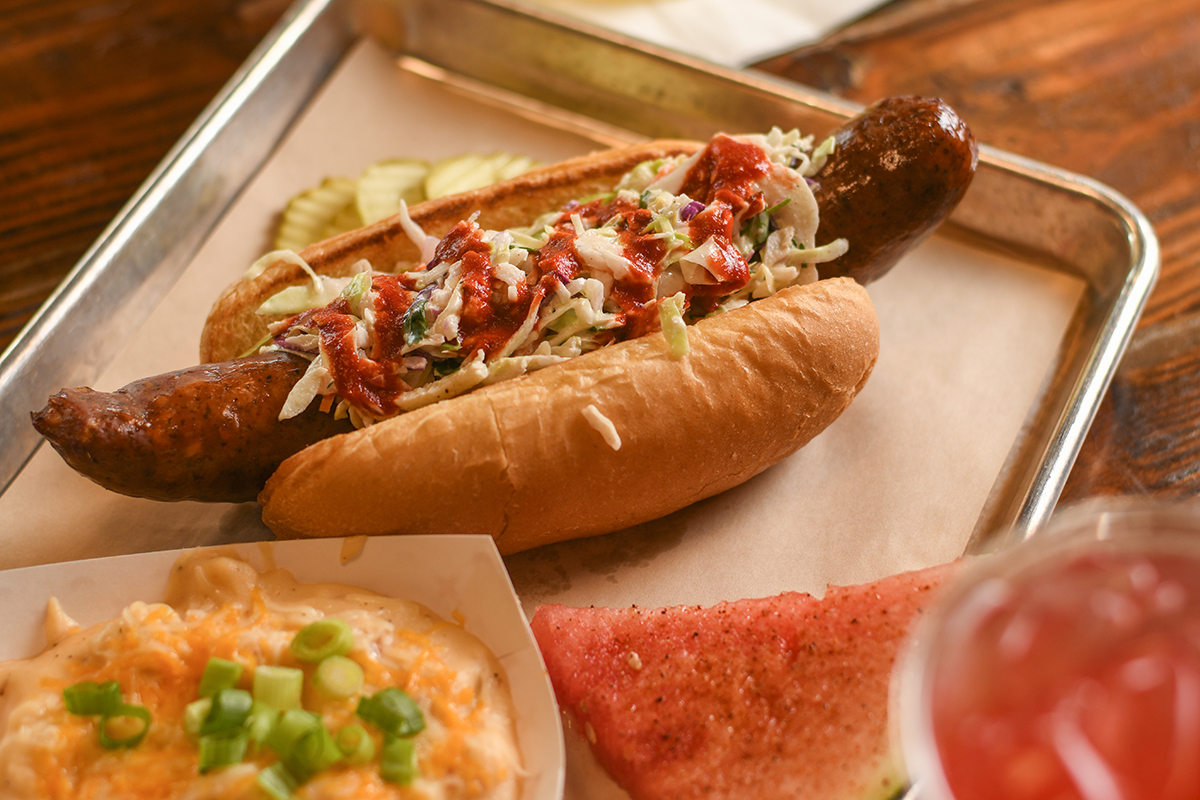Crossing the Kansas River is a daily occurrence for many people in the city. It’s a familiar blur on the drive to work along a bustling interstate. Despite being a key feature of the city’s natural topography with a history closely tied to the city, KC’s second river is regularly overlooked, along with its surrounding railroad bridges and industry. That may soon change.
For Wyandotte County, the Kaw riverfront holds promise as an area that could be developed into a welcoming two-acre community space to inspire the public to go out and enjoy the natural riverfront. To do that, the Unified Government of Wyandotte first needs to stop the area from flooding—as happened in 1993, when a deadly flood covered thousands of acres.
Starting last year, the Unified Government has been actively raising the levee around the riverfront as a first step to building what could soon become a center of tourism, recreation and nightlife. The levee is the first step in a five-year plan, which will continue with mixed-use trails being built on top followed by the Rock Island Railroad Bridge being transformed into an entertainment space slated to open in the spring of 2023.
All about triangulation

Once the levee has been improved—it should be fully completed by 2026, says Katherine Carttar, who works in development for the Unified Government—the project will transform nearby riverfront into recreation spaces. The main focus of the space lies on a triangular plot of open land that was once part of the Kansas City Stockyard from 1871 to 1991. The land sits on the Kansas side, just south of Interstate 670, near the historic Rock Island Bridge and in view of the Hy-Vee Arena.
“The whole thing is an opportunity to rethink how we see the river and to encourage people to get out and get moving,” Carttar says. She also notes that the health statistics for Wyandotte County are among the lowest in the state, and she hopes to improve that through the creation of more community spaces and a network of trails.
Trailblazing
“We want to make sure this is an area that is so right for activity and entertainment, and on top of that, literally, are the levee trails,” Carttar says. The trails created along the riverfront will connect to nearby trail networks, such as the Riverfront Heritage Trail. “That is the joy of these trail networks: You don’t have to have them in a bubble,” Carttar says. “They can be connected.” There will be benches and fountains along the trails and lighting along the paths. Various sections of the trails will switch between being paved and laid with tiny aggregate rock for cyclists and runners alike.
From the trails, there will be crossings over to the west side of the Kaw River, which Carttar says will invite people further into KCK. The inspiration comes from cities that have their own riverfront spaces such as Austin, Washington D.C and Louisville.
The whole project will include seventeen miles of new trails along the riverfront. The triangle-shaped plot of land will include shaded gathering areas, parking, stairs to river viewing areas, access points for kayaks and more.
Bridge outside the box
A vision for even more community space comes from the Rock Island Bridge project slated to open next year, and the new owners of the renovated Hy-Vee Arena.
There have been discussions of a zipline from the top of the arena to the bridge as well as a possible ropes course on top of the three-acre roof of the Hy-Vee Arena. “There are a lot outside-the-box, fun things that we have never really done,” Carttar says. “People have a lot of of ideas.” Once more land is acquired to the north, there is an opportunity for even more recreational activity spaces for the community, possibly including a public park or a skating rink.
The Unified Government is also working alongside the Kansas City Boat Club to add access to the river through docks and possibly kayak rentals. Unlike the mighty Missouri River, the Kansas River has a slower current that makes it better suited to casual paddling. “I just think it is a great opportunity to think about our relationship with the river,” Carttar says.





